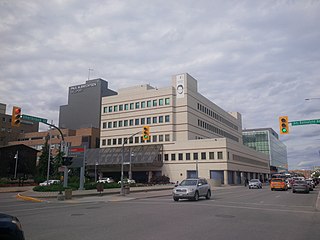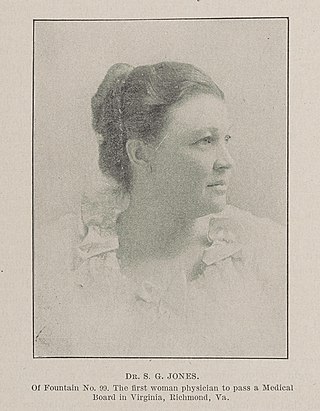
A nursery rhyme is a traditional poem or song for children in Britain and many other countries, but usage of the term dates only from the late 18th/early 19th century. The term Mother Goose rhymes is interchangeable with nursery rhymes.

A bedroom or bedchamber is a room situated within a residential or accommodation unit characterised by its usage for sleeping. A typical western bedroom contains as bedroom furniture one or two beds, a clothes closet, and bedside table and dressing table, both of which usually contain drawers. Except in bungalows, ranch style homes, ground floor apartments, or one-storey motels, bedrooms are usually on one of the floors of a dwelling that is above ground level. Beds range from a crib for an infant; a single or twin bed for a toddler, child, teenager or single adult; to bigger sizes like a full, double, queen, king or California king). Beds and bedrooms are often devised to create barriers to insects and vermin, especially mosquitoes, and to dampen or contain light or noise to aid sleep and privacy.

Walter Crane was an English artist and book illustrator. He is considered to be the most influential, and among the most prolific, children's book creators of his generation and, along with Randolph Caldecott and Kate Greenaway, one of the strongest contributors to the child's nursery motif that the genre of English children's illustrated literature would exhibit in its developmental stages in the later 19th century.

Mary Louisa Molesworth, néeStewart was an English writer of children's stories who wrote for children under the name of Mrs Molesworth. Her first novels, for adult readers, Lover and Husband (1869) to Cicely (1874), appeared under the pseudonym of Ennis Graham. Her name occasionally appears in print as M. L. S. Molesworth.
ECU Health Medical Center is a hospital located in Greenville, North Carolina. It is the primary teaching hospital for East Carolina University's Brody School of Medicine and is the flagship medical center for ECU Health. ECU Health is a Level 1 Trauma Center, one of 6 in the state of North Carolina. It is the only level I trauma center east of Raleigh, and thus is the hub of medical care for a broad and complicated rural region of over 2 million people. ECU Health Medical Center is the largest employer in Eastern North Carolina and 20th overall in the state.
Katherine Shaw Bethea Hospital is a hospital in Dixon, Illinois. KSB Hospital is an 80-bed acute care facility providing comprehensive ancillary services, including emergency medicine, obstetrics, inpatient psychiatry, a cardiovascular laboratory, outpatient surgery, inpatient surgery, and intensive care, among others.

British Columbia Children's Hospital is a medical facility located in Vancouver, British Columbia, and is an agency of the Provincial Health Services Authority. It specializes in health care for patients from birth to 16 years of age. It is also a teaching and research facility for children's medicine. The hospital includes the Sunny Hill Health Centre, which provides specialized services to children and youth with developmental disabilities aged birth to 16 years.

The President's Dining Room is a dining room located in the northwest corner of the second floor of the White House. It is located directly above the Family Dining Room on the State Floor and looks out upon the North Lawn. The Dining Room is adjacent to the Family Kitchen, a small kitchen designed for use by the First Family, and served by a dumbwaiter connected to the main kitchen on the ground floor.

The Executive Residence is the central building of the White House complex located between the East Wing and West Wing. It is the most recognizable part of the complex, being the actual "house" part of the White House. This central building, first constructed from 1792 to 1800, is home to the president of the United States and the first family. The Executive Residence primarily occupies four floors: the ground floor, the state floor, the second floor, and the third floor. A sub-basement with a mezzanine, created during the 1948–1952 Truman reconstruction, is used for HVAC and mechanical systems, storage, and service areas.
Spartanburg Regional Healthcare System(SRHS) is one of South Carolina's largest healthcare systems. SRHS draws patients primarily from the areas of Spartanburg, Cherokee, Union, and Greenville counties (all located in the Piedmont region of South Carolina) as well as Rutherford and Polk counties (located in western North Carolina). Spartanburg General Hospital was organized under the authority of the South Carolina General Assembly in 1917 and officially became the Spartanburg Regional Health Services District, Inc., a political subdivision of the State of South Carolina, by the charter granted by the secretary of state of South Carolina on May 1, 1995.
St. Cloud Hospital is a hospital in St. Cloud, Minnesota, United States. It is a Catholic-affiliated, not-for-profit institution and part of CentraCare Health. The hospital has more than 9,000 employees, 400 physicians and 1,200 volunteers. It serves 690,000 people in a 12-county area.

The Children's Hospital of Winnipeg is a children's hospital in Winnipeg, Manitoba. It is located on the campus of the Health Sciences Centre near downtown Winnipeg and is expressly devoted to the health care of children.

St. Luke's International Hospital (聖路加国際病院) is a general and teaching hospital located in the Tsukiji district of Chūō, Tokyo, Japan.

Kapiʻolani Medical Center for Women and Children is part of Hawaii Pacific Health's network of hospitals. It is located in Honolulu, Hawaii, within the residential inner-city district of Makiki. Kapiʻolani Medical Center is Hawaii's only children's hospital with a team of physicians and nurses and specialized technology trained specifically to care for children, from infants to young adults. It is the state's only 24-hour pediatric emergency department, pediatric intensive care unit and adolescent unit. The hospital provides comprehensive pediatric specialties and subspecialties to infants, children, teens, and young adults aged 0–21 throughout Hawaii.

McLaren Flint is a nonprofit, 378 bed tertiary teaching hospital located in Flint, Michigan. McLaren is affiliated with the Michigan State University College of Human Medicine's medical residency programs, including family medicine, internal medicine, general surgery, orthopedic surgery and radiology. McLaren also maintains a hematology/oncology fellowship program in partnership with Michigan State University and is sponsoring a surgical oncology fellowship program. McLaren Flint is a subsidiary of McLaren Health Care Corporation.

The Grand Hotel is a Grade II* listed Victorian five star hotel in the city centre of Birmingham, England. The hotel occupies the greater part of a block bounded by Colmore Row, Church Street, Barwick Street and Livery Street and overlooks St Philip's Cathedral and churchyard. Designed by architect Thomson Plevins, construction began in 1875 and the hotel opened in 1879. Extensions and extensive interior renovations were undertaken by prominent Birmingham architecture firm Martin & Chamberlain from 1890 to 1895. Interior renovations included the building of the Grosvenor Room with Louis XIV style decoration.

Kuala Lumpur Hospital is the largest Malaysian government-owned public general hospital in Kuala Lumpur, the capital city of Malaysia. Founded in 1870, HKL is a not-for-profit institution and serves as the flagship hospital of the Malaysian public healthcare system. This hospital serves as a tertiary and referral hospital. It is located on 150 acres of prime land in the city with 84 wards and 2,300 beds, making it one of the largest hospitals in the world. More than 90 per cent of the beds in HKL are allocated for subsidized patients, providing access to an internationally established standard of affordable healthcare.

The official residence of the United States ambassador to the United Nations, established in 1947, was originally located in a suite of rooms on the 42nd floor of the Waldorf-Astoria Hotel in New York City leased by the U.S. Department of State. Described in press reports as "palatial", the ambassadorial residence was the first one to be located in a hotel. The Department of State vacated the Waldorf Astoria shortly after the Chinese Anbang Insurance Company purchased the Waldorf-Astoria in 2015, raising security concerns. The United States purchased a penthouse apartment at 50 United Nations Plaza in May 2019 after initially renting a different penthouse apartment in the same building.

Sarah Garland Boyd Jones was an American physician from the U.S. state of Virginia. She was the first woman to receive a certificate from the Virginia State Medical Examining Board and co-founded a hospital in Richmond, Virginia with her husband, Miles Berkley Jones.

The Gingerbread Mansion, also known as the Ring Mansion, is a historic Queen Anne Victorian style house located at 400 Berding Street in Ferndale, Humboldt County, California. Historically it has served as the family home of medical doctor Hogan J. Ring (1851–1930), his office, a public hospital, American Legion hall, rest home, apartments, and a bed and breakfast inn.

















